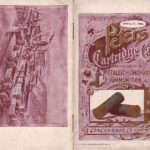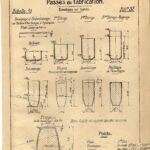Book Review: German Flare Pistols and Signal – By Dr. Lorenz Scheit
- February 12, 2023
- 3 Min Read
This book was reviewed by Hubert S. Morokutti and originally published in IAA Journal Issue 490, Mar./Apr. 2013
At last a book has been written on a subject ignored by most firearms and ammunition authors. Dr. Scheit must be commended for putting together all this information on signal pistols, but most of all the information on signal ammunition that fills most of this large book, over 700 pages in all. Commendations go also to Dr. Sturgess for the outstanding job of editing and translating the book from the original German text to English. Hats off to you both gentlemen !!
The book is in a large format 9¼” x 12″, almost 2″ thick and almost 7 pounds. You actually get two books in one.
Thousands of signal cartridges are shown in photographs, drawings and in containers, the purpose of the ammunition, the specific coding, and manufacturers’ specifications at the time of issue to military or commercial users are listed. The book is presented in chronological order: the origin of German pyrotechnic signals; WW-I; 1918 to 1939; WW-II; the Post War West German era 1945 to 2010; and East Germany 1945 to 1989. The book covers the overwhelming the amount of signal ammunition that was produced in Germany in all the periods listed above. Also, considerable insight is given to German explosives that were produced to be fired from signal pistols, such as anti-personnel and armour-piercing grenades and hollow charges. The book is truly a “must” for the cartridge collector out there either purely for interest’s sake, or to start a new line in your current collection. But be warned: you may not live long enough to even scratch the surface of this subject!

The second part of the book deals with signal pistols, flare guns, Very pistols, or whatever you may want to call them. The pistols or launch- ing devices are listed by their specific time periods just as the cartridges, and also contain the accessories for the pistols, such as holsters, cleaning rods and ammunition pouches and containers.
The book also contains numerous reprints of original manuals for ammunition, signal pistols and Allied reports of German wartime manufacture of signal ammunition.
A final word: the book is a must to have. If you have a friend that has one, look at it and be amazed. It focuses on German signal stuff only. Think about all the other countries that use hand-held signal devices. Let’s hope the author will get around to filling this gap as well. Go ahead, add one of the books to your bookshelf. Happy reading and collecting.




